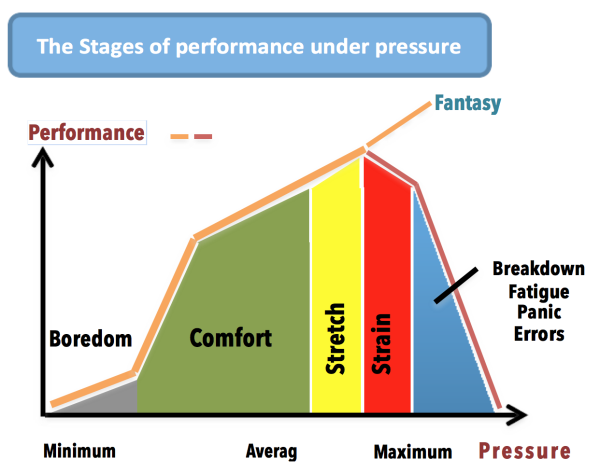If you think stress is ‘normal’ or ‘necessary for good performance’ then you are wrong: you are also a potential danger to yourself and to those who report to you.
Sure, the pressure of a deadline gets all of us going. Determination to perform well is a driver of good outcomes. But stress is a symptom of and description of overload. Overload risks catastrophic breakdown and dangerously poor performance.
The data is clear – as shown in the diagram. But be careful how you interpret the graph!
 The diagram does not show that high performance occurs at maximum stress.
The diagram does not show that high performance occurs at maximum stress.
Rather, it shows that as stress [the axis along the bottom] increases, we reach an optimum zone, shown in yellow, which is a stretch. This means we have to strive a bit but we perform optimally. A sprint for the finish, if you like.
We can do this several times in a day but not continually.
Beyond this, we enter a ‘strain zone’ correctly shown in warning red.
In the strain zone, our stress hormones like adrenalin and cortisol operate and after quite a short time performance begins to drop and mistakes are prevalent.
A prolonged period in the strain zone leads to ill health and absence from work – possibly even breakdown.
Follow the top line to the right and you see the fatal flaw. A belief that you can put yourself, or your team, under increasing pressure forever, is a fantasy: a foolish fantasy.
Fortunately, neuroscience tells how we create stress. Surprisingly all is not as it seems, it is not the external factors that create stress but our perception of the situation, our thinking around the experience we are having. From this thought process, the physical symptoms of stress follow.
Understanding the mechanisms and learning how to handle the situations that cause problems is a guaranteed stress-buster, for all time.
We run courses and coach on how to succeed without overload.




Comments are closed.